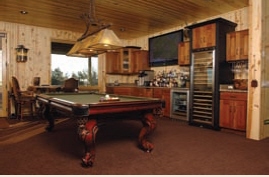
South Dakota has been the epicenter of pheasant hunting since the introduction of the bright Asian game bird more than 100 years ago. During the fall, over 100,000 pheasant hunters are in the field on opening day. It has become a ritual of sorts for upland hunters, from the wealthiest, who fly in for the event, to the yeomen who drive across the country in campers and pickups for the great hunt.
Paul Nelson,a pioneer in commercial hunting operations in South Dakota, has witnessed this for sixty years. Times were not always good for the pheasant, and the switch from cowboys to farmers destroyed much of the natural habitat needed for good populations. Nelson was one of the first to change agricultural practices on his 10,000 acres to address the needs of the bird, as well as setting aside almost one quarter of his land in the Conservation Reserve Program to provide natural cover and habitat.
The result has been dramatic, and now the pheasant populations are strong. On the Paul Nelson Farm they are nothing short of stunning. On a good day, hunters walking the fields of the farm will put up 200 to 400 wild birds that fly with the speed and determination that only wild birds can offer. It is a hunting experience that has built a reputation as one of the best in the country and brings in those who can afford the best. The Paul Nelson Farm has been jokingly called the “Camp David of the west,” a testament to the experience. When hunting with Paul Nelson you are hunting with a man whose life has been devoted to the sport and to the bird;, who knows the pheasant as well as any man alive, and who loves to share his passion with his guests.
The Wall Street Journal’s Michael Pearce said in a February, 1996, article, “But there is no time for total relaxation when taken afield by Mr. Nelson’s guides and dogs. Proof that agriculture and wildlife can coexist, Paul Nelson’s farm’s thousands of acres spew birds like bees from a shaken hive. The wingshooting is indeed so good Mr. Nelson had to seek special regulation that allows gunners to take more than the state-regulated three-bird-per-day limit.”

When the day is done one retreats to a lodge dedicated to the hunt with every amenity a hunter could desire, from a gun room to kennels to take care of the most important hunters. Here you can enjoy the company of other hunters or find solitude. The food is local, and hunters will eat pheasant like they’ve never tasted and enjoy the fruits of South Dakota’s cattle ranchers.
“Our goal has always been to make you feel right at home,” says Nelson. “We’re perfect for people who love a great hunt but don’t really want to rough it.” For any hunter who has walked miles in search of a few pheasant out of pure love for the sport, this is not roughing it. This is paradise.